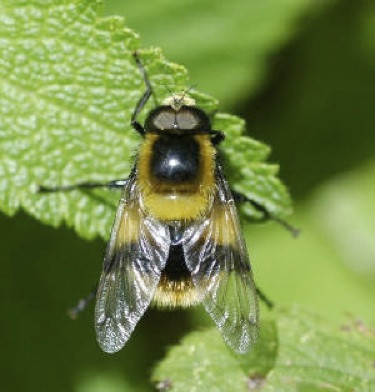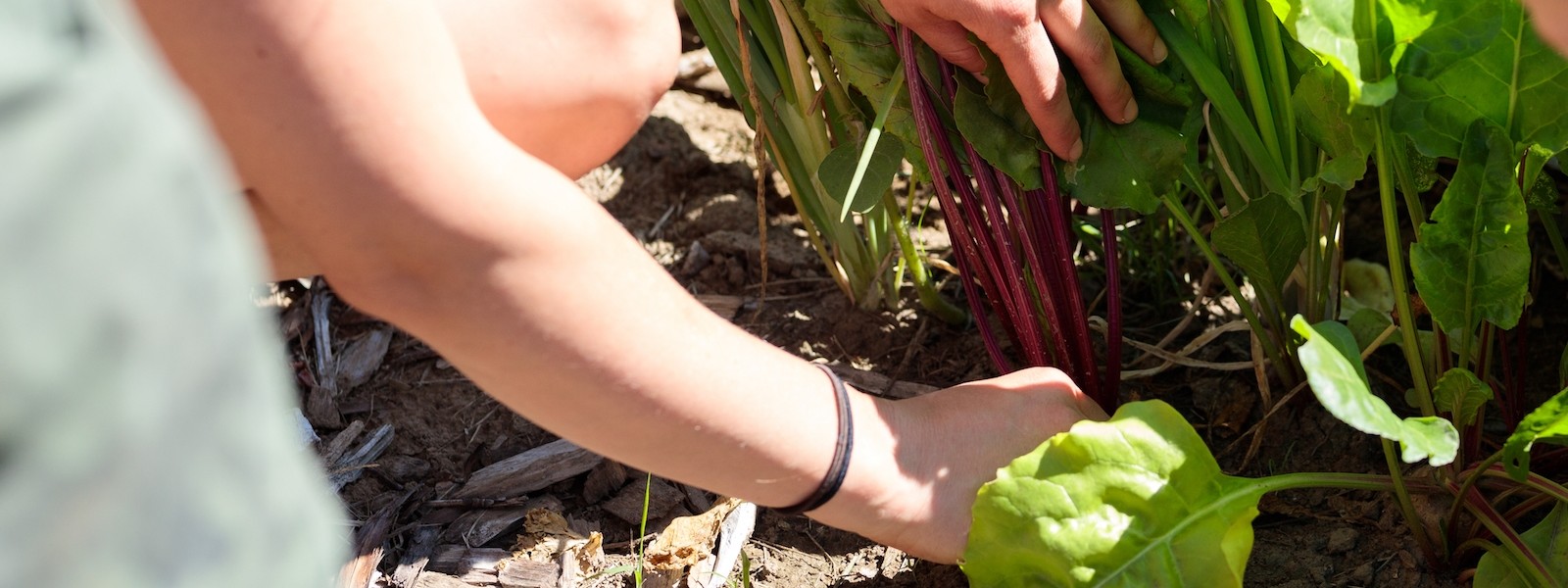Beneficial Insect: Syrphid Fly or Hover Fly
These guys are your friends! Hover flies do not sting. They will hover like a hummingbird as they drink nectar from flowers.
Adult hover flies resemble small wasps, with a black and yellow or white striped abdomen. They range in size from 1/4” to 1/2” depending on the species. The adults are the pollinators and its the larvae that consume pests. Hover fly larvae are small brown or green maggots that hatch from eggs laid on plants infested with soft bodied pests.

Life Cycle
Adult females lay up to 100 eggs over the course of their lifetime and cannot reproduce unless they have access to pollen as a food source. When the larvae hatch, then feed on pests for a week to ten days or longer then drop to the soil to pupate. Adults emerge after two weeks. Typically there are 3 to 7 generations per year. The pupae will over winter in the soil or in garden debris, emerging as adults in late May or early June.
Pests They Control
Hover fly larvae rid your garden of: aphids, young cabbage worms and other caterpillars, and mealybugs.
How to Attract and Keep Them
- Plant a diversity of flowers
- Choose: alyssum, Aster, Coreopsis, cosmos, daisies, dill, fennel, feverfew, lavender, marigolds, mint, statice, sunflowers, wild mustard and zinnia.
- Provide continual blooming from the last frost til the first frost since hover flies are active throughout the growing season. Plant a variety of flowers to ensure there is always something blooming.
- Leave weeds such as wild carrot and yarrow between crop plants.
More About…
Some pretty amazing studies exist regarding hover flies and their ability to “turn on” and “turn off” their reproductive capabilities based on odors present in the plants. Aphid infested potatoes emit particular odors into the air that attract hover flies and set their egg-laying capability into motion. When no aphids are present, a different odor is released telling the hover flies there is no prey available. Even in a contained environment, pregnant female hover flies will not lay eggs on non-infested plants; and, when aphids are present, the number of eggs she lays is hugely dependent on how many aphids are there.
Sources
CCF staff
Good Bug, Bad Bug by Walliser 2008
The Organic Gardener’s Handbook by Ellis and Bradley 1996
Interested in learning more? The Grower’s Library at Johnny’s Selected Seeds may have the information you’re looking for.

